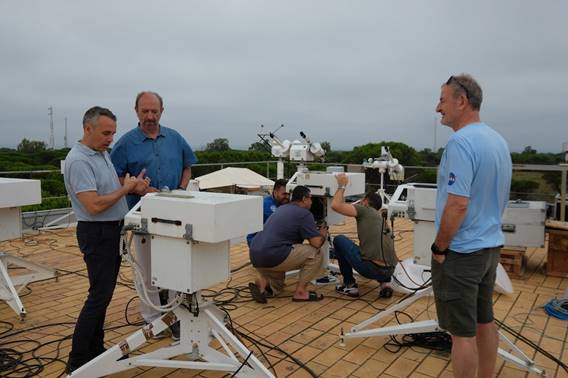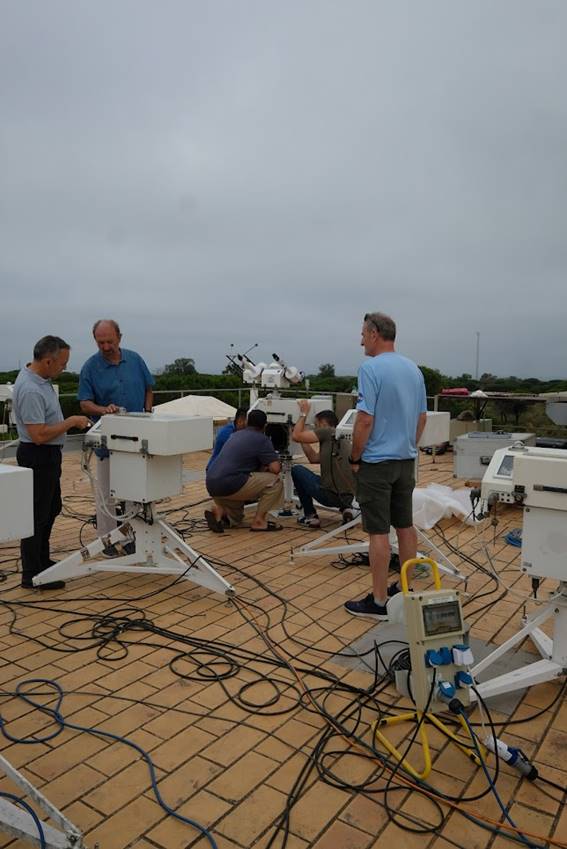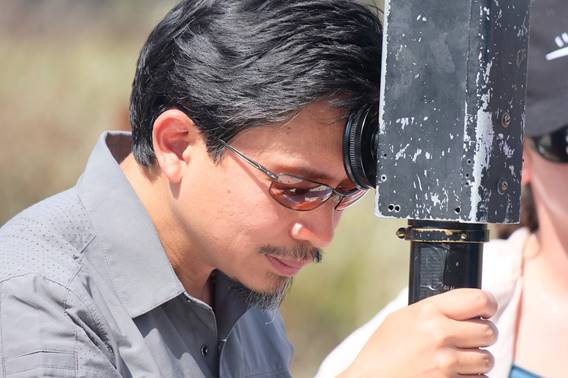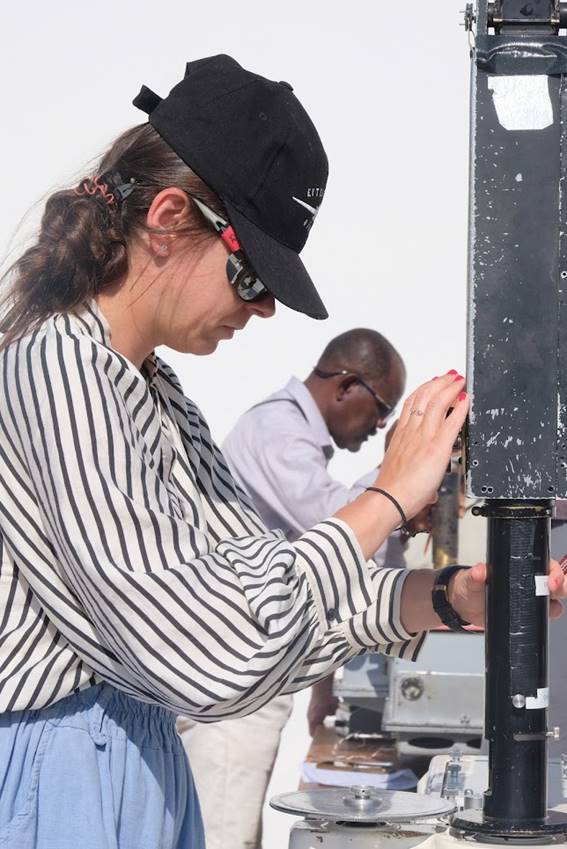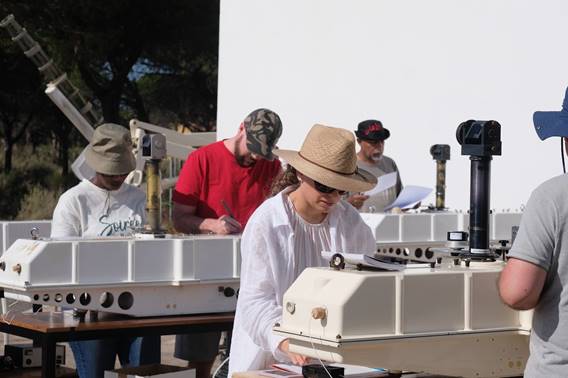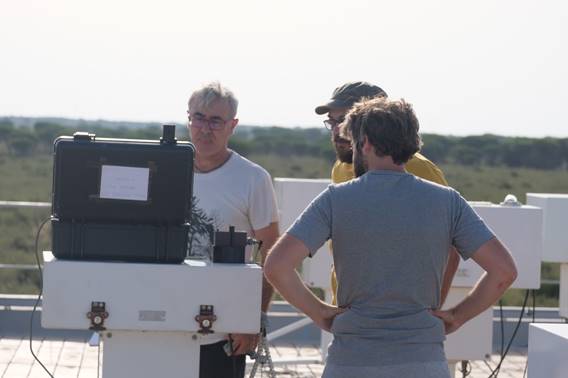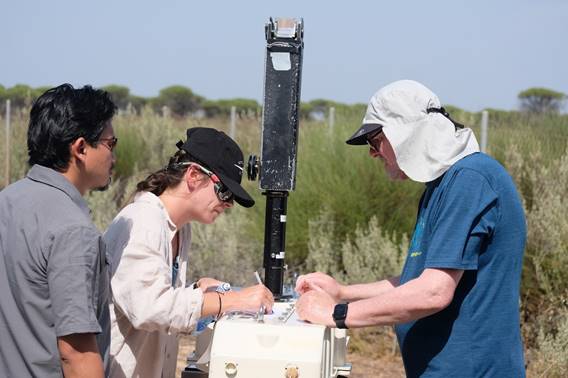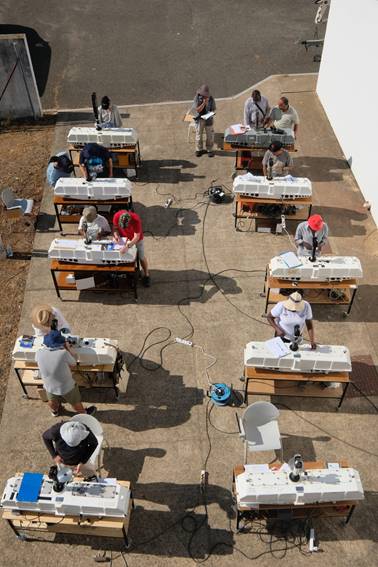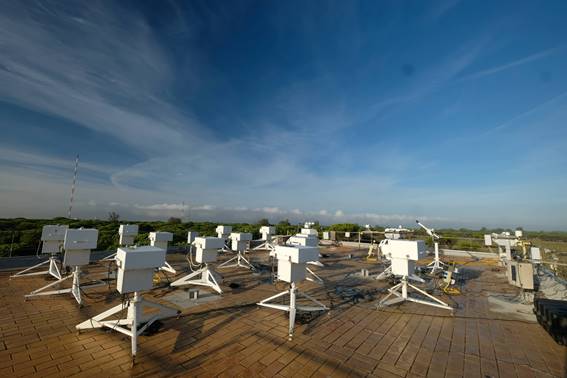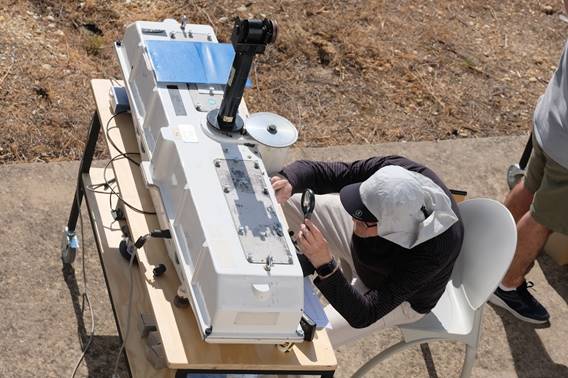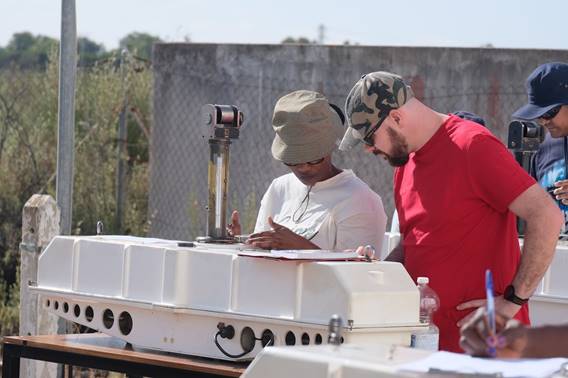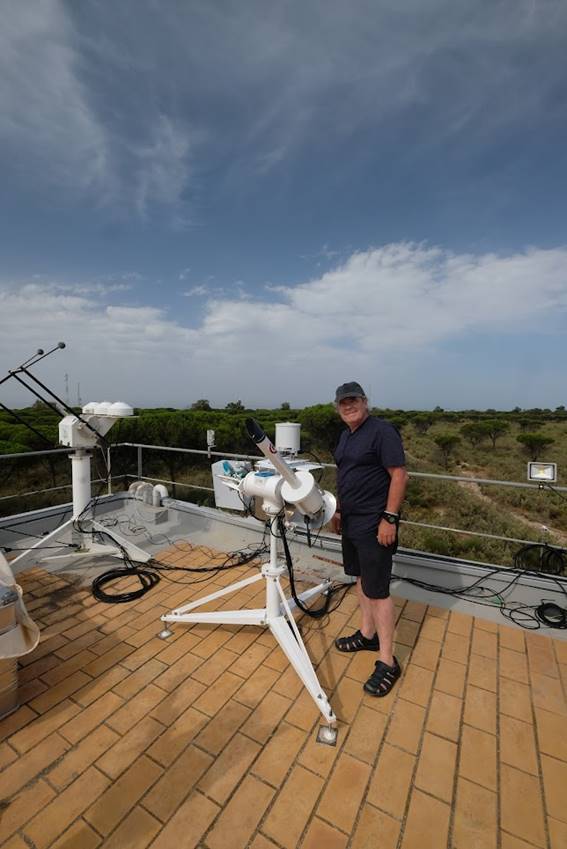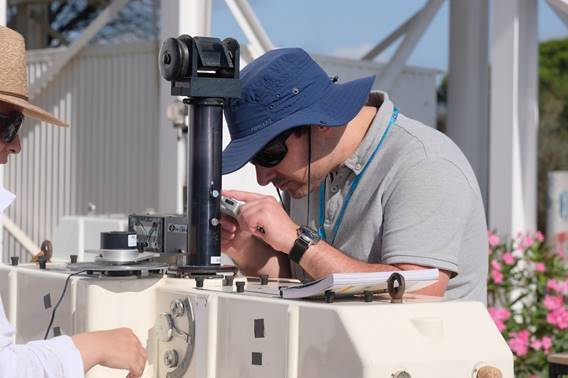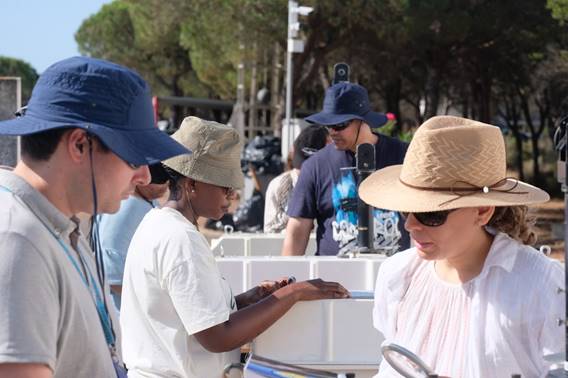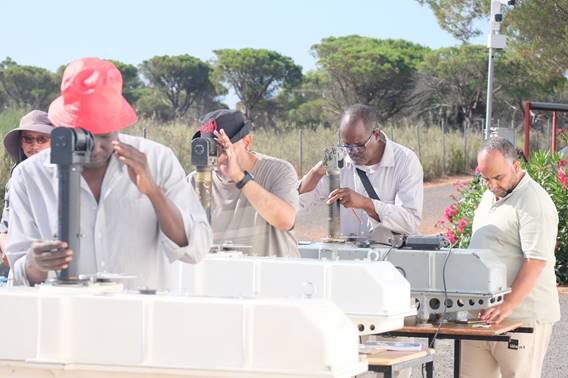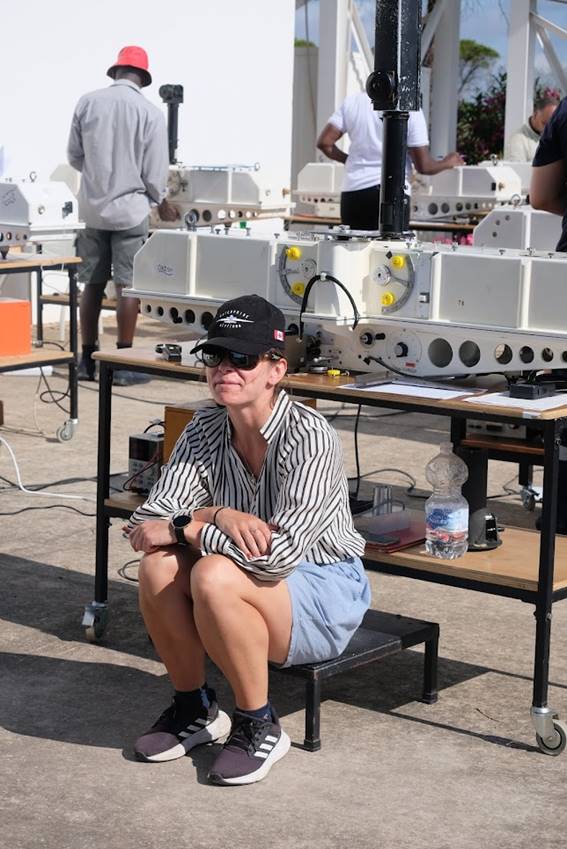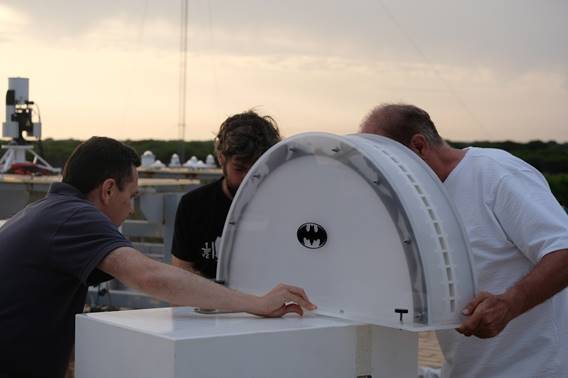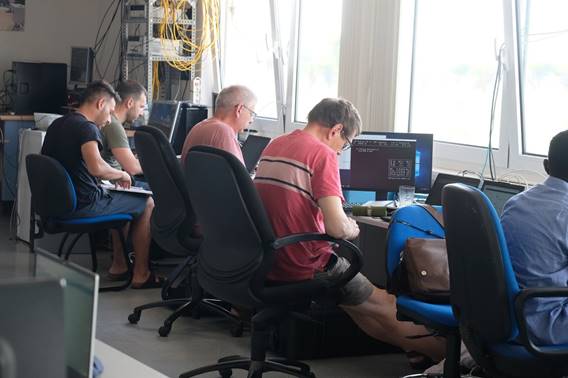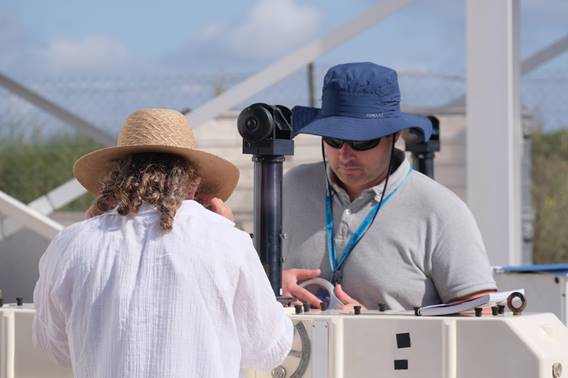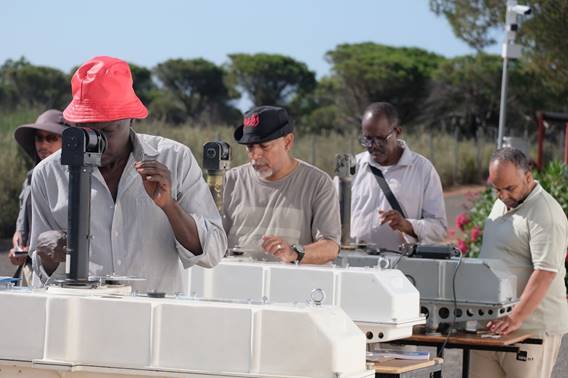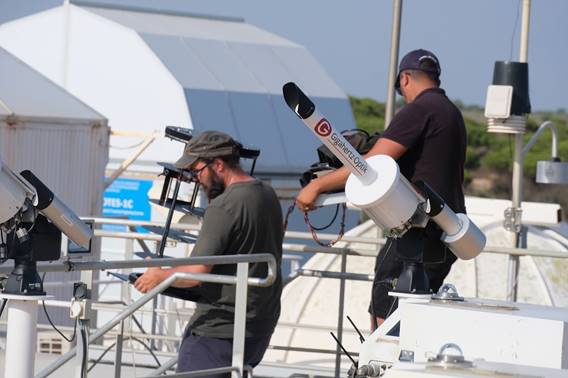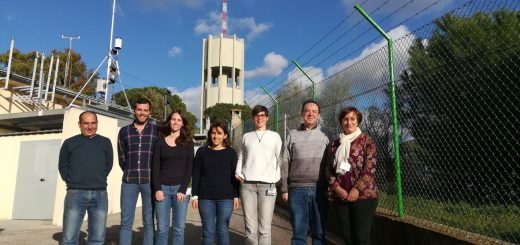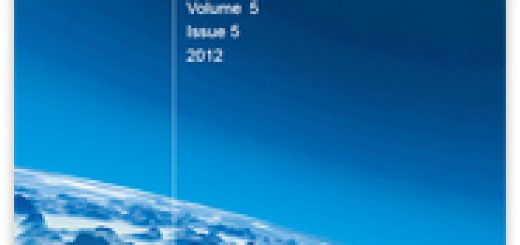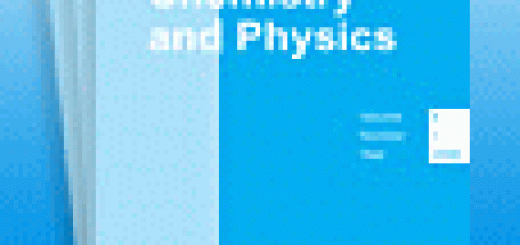International Campaign on Instruments for Measuring Total Ozone and Ultraviolet Solar Radiation
Clic here for spanish version
El Arenosillo, Huelva — June 2025
The State Meteorological Agency (AEMET), which operates the Regional Brewer Calibration Center for Europe (RBCC-E) under the World Meteorological Organization (WMO) and through its Izaña Atmospheric Research Center (IARC), has organized—together with the Atmospheric Research and Instrumentation Area (AIIA) of the National Institute for Aerospace Technology (INTA)—the 20th International Calibration and Intercomparison Campaign for instruments measuring total ozone and ultraviolet solar radiation.
This campaign took place from June 16 to 28, 2025, at INTA’s Atmospheric Sounding Station in El Arenosillo (Huelva).
El Arenosillo hosted the 20th edition of the RBCC-E campaign, co-organized by AEMET and INTA, along with the 6th African Intercomparison Campaign for Dobson/Brewer instruments, held with the support of the WMO. This event has become an international benchmark for ozone layer monitoring and for ensuring the quality of atmospheric measurements.
More than 50 specialists from 16 countries participated in this campaign, which included: 10 Dobson instruments, 20 Brewer spectrophotometers and 6 BTS spectrometers, candidates to replace the traditional Brewer models that have recently ceased production.
The instruments, from countries such as the United Kingdom, Denmark, Spain, Italy, Greece, Kenya, Egypt, Algeria, Uganda, and South Africa, were calibrated against references provided by the Dobson Regional Calibration Center in Hohenpeissenberg (DWD, Germany), the Central Calibration Laboratory of Izaña (IARC, AEMET, Spain), and the World Radiation Center (PMOD-WRC) in Davos, Switzerland.
Thanks to funding from WMO/UNEP, several African teams were able to attend, increasing geographic diversity. During the second week, and at the request of the WMO, an international training course for ozone instrument operators was held in parallel to the campaign, with official WMO certification for registered participants—strengthening technical capacities in participating countries.
These activities are essential for maintaining the quality and consistency of total ozone observations, which are crucial for validating satellite data and monitoring the state of the ozone layer.
Such campaigns—like the one held in El Arenosillo—are fundamental tools for stratospheric ozone surveillance, for studying its links to climate change, and for validating new instruments and improving atmospheric observation techniques.
Links:
- International Ozone Comparisons – PMOD/WRC
- Dobson calibration campaign organized by the Regional Dobson Calibration Center coordinated by Voltaire Velasco (DWD) : Wetter und Klima – Deutscher Wetterdienst – RDCC – Regional Dobson Calibration Center – RDCC for Europe
- Brewer calibration campaign organized by the Regional Brewer Calibration Center for the ozone and the PMOD-WRC who provide the uv calibration. This campaign is coordinated by Alberto Redondas (AEMET) https://rbcce.aemet.es/2024/11/27/the-xx-intercomparison-campaign-of-the-regional-brewer-calibration-center-europe/
- Total ozone operators course organized by the Regional Brewer Calibration Center and coordinated by Virgilio Carreño (AEMET). t https://rbcce.aemet.es/2025/02/19/brewer-course-2025/
- International Total Ozone Intercomparison: With the aim to validate the variety of total ozone instruments. This campaign is organized by RBCC-E and is coordinated by Alberto Redondas (AEMET). https://rbcce.aemet.es/2025/02/04/total-intercomparison-campaign-estacion-de-sondeos-atmosfericos-del-el-arenosillo-huelva-15-28-june-2026/
Pictures:
